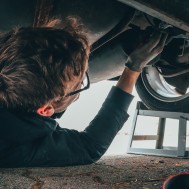In the automotive industry, injection molding has proven to be a cost-effective and consistent way to produce high-quality rubber seals that meet the industry’s strict regulations. While this type of molding is more complex than compression and transfer molding, it is ultimately quicker and more beneficial for producing automotive seals.
With increasing electrification, automation and artificial intelligence in vehicles, complex, reliable rubber seals are crucial to the success of these high-tech applications. To get a better understanding of how injection molding is leading the way in automotive seal production, here’s what you need to know about the process.
Provides Consistent Repeatability
For the automotive industry, the ability to precisely replicate each part is crucial. Injection molding makes this simple–once a mold is cut using reliable metal materials, the mold can continuously be used to make all seals under those specifications. This makes it easy for the automotive industry to receive the exact requirements they need in every seal.
Shorter Cycle Times
Injection molding reduces lead times and cycle times significantly. Since injection molding can be fully automated, the entire process is sped up, allowing the cycle times to be tracked in seconds rather than minutes. This is especially important in the fast-paced automotive industry, which relies on quick production and assembly.
Reduces Waste
The injection molding process minimizes raw material contamination by eliminating exposure to the environment. With reduced contamination, molded parts and seals can be used for more critical applications, such as AI sensors in new automotive models. Rubber injection molding can also create custom shapes with little to no flash, or excess material that exceeds the normal part geometry. This allows manufacturers to create complex custom shapes in a cost-effective, sustainable way.
Creates Seals for a Wide Range of Parts
The versatility of rubber injection molding allows manufacturers to create seals for a variety of automotive applications. Some of the most common places to find rubber seals include:
- Engines
- Under the hood
- Splash guards
- Electrical component protection
- Sensors
- Cushioning
Despite the complexity of the process and known risks surrounding it, such as short shots or voids, injection molding is the most cost and time-sensitive way to produce precise rubber seals for the automotive industry.
Want to talk more about injection molding?
Tweet us @AppleRubber to continue the conversation.
